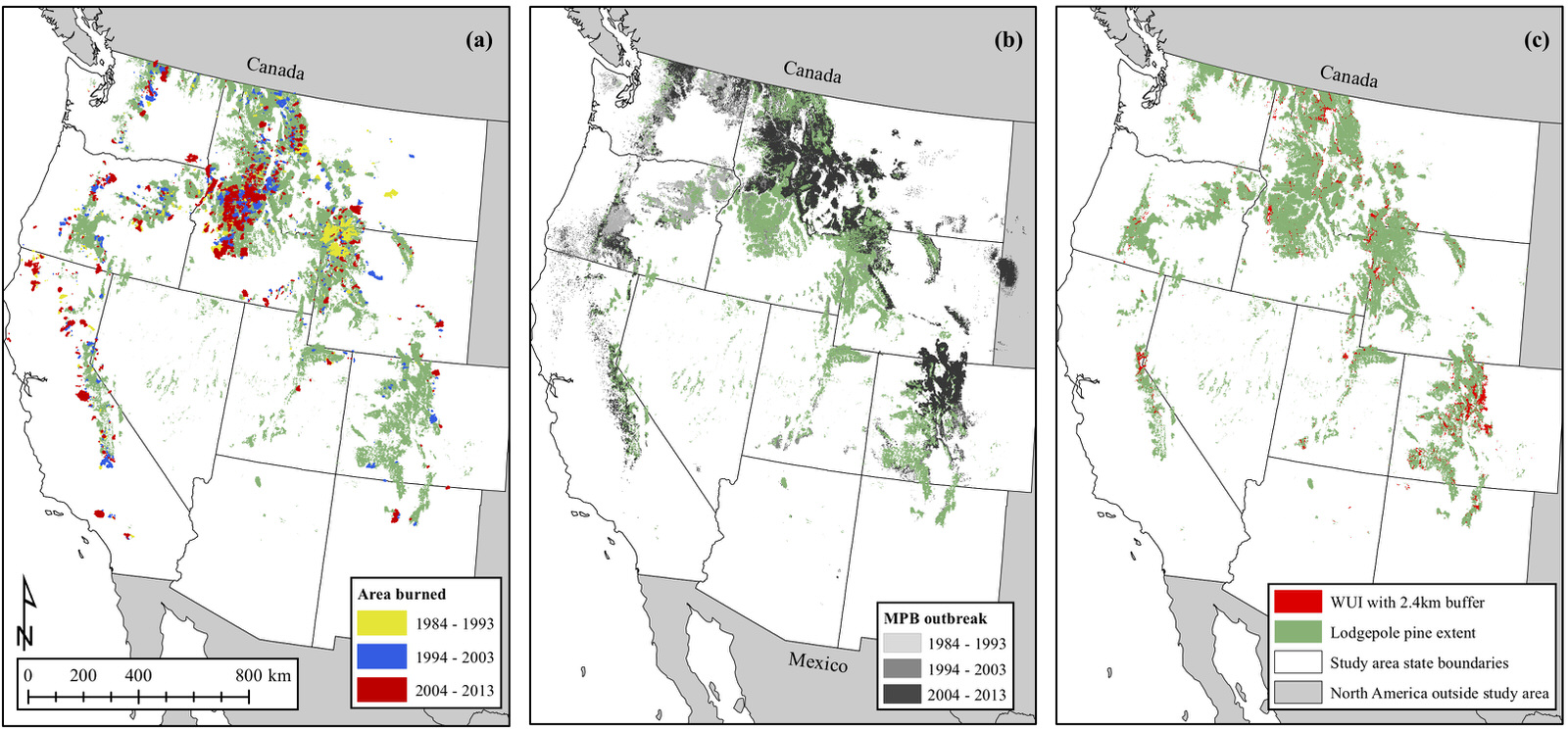Projects

Costs of human-ignited wildfires in the U.S. (2001-2015)-from the Wildland-Urban Interface to wildlands
The consequences (fire frequency, burned area, seasonality) and costs (suppression costs, homes destroyed, lives lost) of human vs. lightning-started wildfires, along a gradient from the WUI to wildland areas across the conterminous U.S. (2001-2015).

How do pre-outbreak forest conditions mediate the effects of spruce beetle outbreaks on fuels complexes in subalpine forests of Colorado?
The changes to fuels following spruce beetle outbreaks are strongly contingent on pre-outbreak stand structure and disturbance history. For instance, we found that spruce beetle outbreaks reduce canopy fuels in all stands, yet this effect is relatively minor in old spruce-fir stands as compared to young spruce-fir stands. Spruce beetle outbreaks during the 20th and 21st century decreased canopy fuels and increased their heterogeneity, regardless of pre-outbreak conditions. Surface fuel loads were more variable with increased time since spruce beetle outbreak and did not return to pre-outbreak conditions over the 75-year period considered in this study in both young and old stands.

What is the relative importance of mountain pine beetle outbreaks versus antecedent climatic variability on the occurrence of large wildfires in the western U.S.?
Despite widespread concern that mountain pine beetle outbreaks lead to unprecedented increases in wildfire activity, here we demonstrated minimal effects of these pre-fire disturbances on subsequent fire occurrence. Instead, occurrence of large wildfires across the western US has been driven by extreme weather (e.g., hot, dry conditions).